Local governments have long struggled to stretch their budgets to meet ever-increasing demand for all aspects of public services. While a strong emphasis is typically placed on public safety, the costs associated with some programs can make them targets for budget cuts or, in some cases, elimination.

Law enforcement aviation programs are often so targeted. Regardless of the size of an agency, the costs associated with acquiring, operating, and maintaining aircraft require a significant political and financial commitment coupled with competent management of day-to-day operations. Without any one of these elements, a program may be destined for extinction.
But one law enforcement aviation unit, facing uncertain prospects, developed a creative budgetary work-around that not only secured its future, but also helped breathe new life into several other allied aviation units.

A little over two years ago, the Martin County Sheriff’s Office (MCSO) Aviation Unit began to realize that its existence was in jeopardy. The unit was operating two military surplus Bell OH-58A helicopters to patrol its small county on Florida’s Atlantic coast 80 miles north of Miami. But spare parts for the aging OH-58s were becoming increasingly scarce, and — as is the case for many small agencies — funding for new aircraft seemed highly unlikely.
Florida has no state income tax and low sales and property taxes. There’s also no estate or inheritance taxes. As a result, smaller counties like Martin have limited tax revenue to invest in relatively high-dollar programs such as law enforcement aviation.

The life ring for the MCSO Aviation Unit came in the form of the federal 1033 program and the Law Enforcement Support Office (LESO). The LESO provides a conduit for the transfer of surplus Department of Defense (DoD) property to law enforcement agencies across the United States. For the MCSO Aviation Unit, it has been a treasure trove for OH-58 parts and additional surplus aircraft.
Tapping the Potential
MCSO chief pilot Doug Newsom first became acquainted with the LESO during his law enforcement aviation career with another Florida agency. While he had very limited direct involvement in actually utilizing the program, he recognized its incredible potential and quietly went about learning the ins and outs of the program.

Upon joining MCSO just two years ago, Newsom and the unit’s aviation technician, Eric Ellington, assessed their meager spares inventory and recognized the unit’s grave situation. “I believe we were within three to four years of being out of business, at least with the OH-58s,” said Newsom. “And with the budget constraints that existed and still do exist across most of the smaller counties here in Florida, it painted a pretty ominous picture.”
They presented the grim news to the department administration and spelled out the potential fate of the aviation unit, due in large part to the unavailability of critical parts. Newsom said, “At that point, the narrowing window was solely driven by rotor blades. I knew that if we were not able acquire rotor blades, we’d be out of business.”
At the same meeting they also outlined the untapped potential of the LESO program and the fiscal impact it could have, not only for the aviation unit, but for the greater department in the form of weapons, equipment, and vehicles. The department administration gave the green light to begin utilizing the program to its fullest potential.
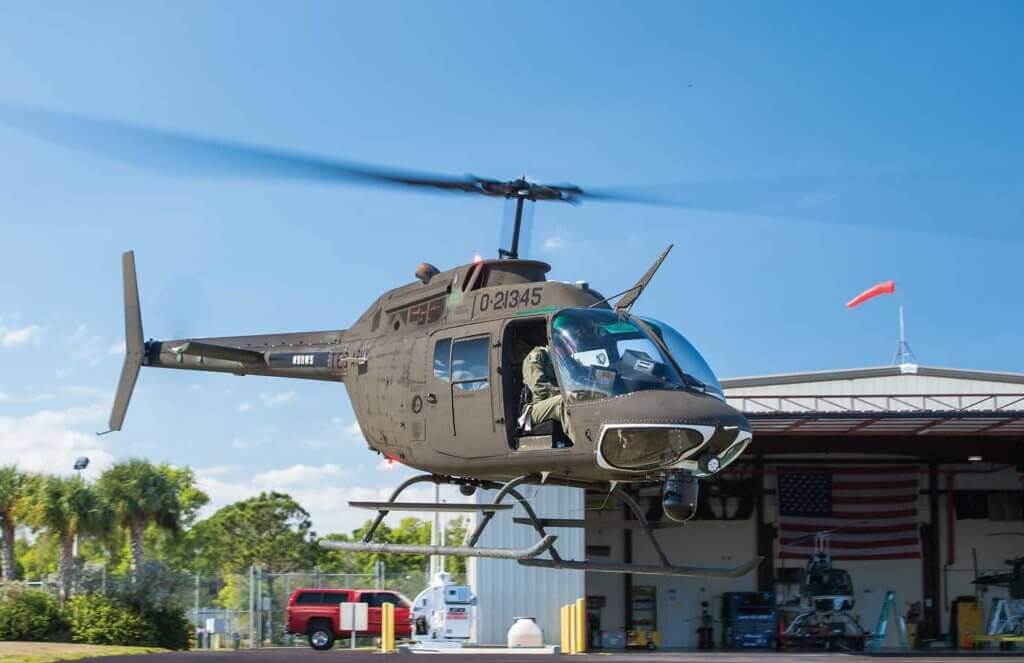
In its basic form, LESO has two procedures pertaining to aviation: one for acquiring aircraft parts and another for surplus flyable and non-flyable aircraft.
Those agencies looking to acquire aircraft apply to LESO to be added to a list of agencies seeking a particular aircraft type. A priority list is established based on several factors. Then, as aircraft come available, notifications are made to these agencies based on their priority ranking. They can then choose to accept or decline the aircraft. Agencies pay a $1,000 transfer fee for non-flyable aircraft and $3,000 for a flyable aircraft.
Surplus parts are handled in a different manner. They are listed on the Defense Logistics Agency (DLA) website along with literally thousands of other parts and items. They are listed by the National Stock Number (NSN) and coded to reflect the condition of each part.
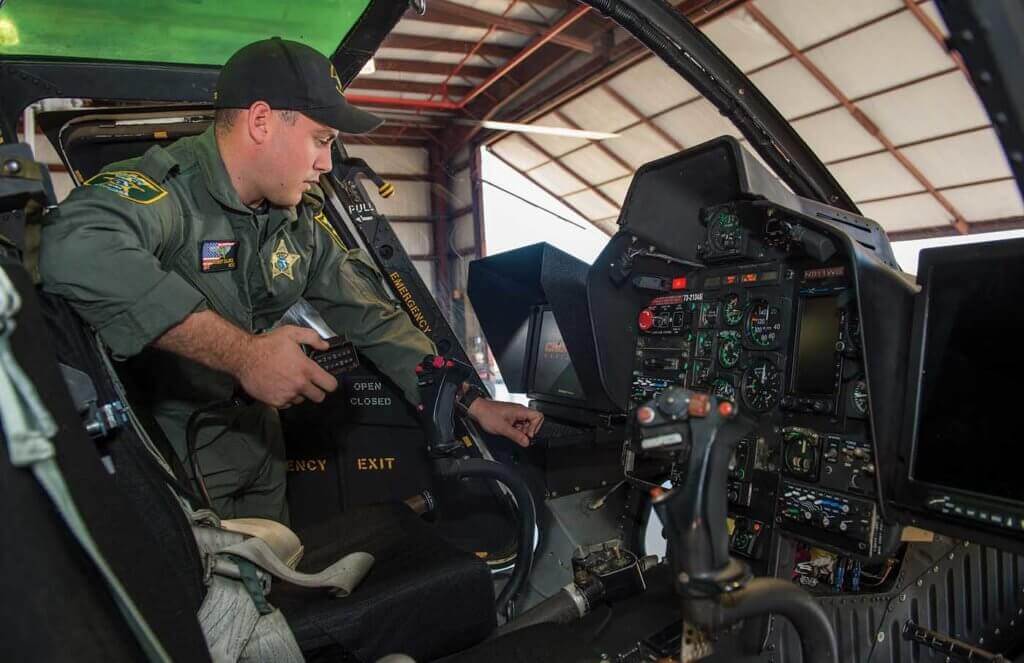
Agency officials approved by LESO can create a “want list” of specific items and the DLA search engine then “crawls” the listings 24/7 looking for a match. Presently, MCSO has search parameters for over 7,000 parts. But in spite of the web crawler search, Newsom and Ellington continue to manually search the site several times each day. “It’s been a team effort between Eric and me,” said Newsom. “While it takes a diligent effort to go in and search every single day, we’ve discovered items often pop into the system and it [the web crawler] doesn’t always catch them.”
When aircraft parts are identified as available, a notification email provides the number available, its condition, and the original military acquisition cost. Agencies must pay one percent of this cost for each item.
As an example, MCSO recently received a notification of the availability of a number of new “-119” main rotor blades. Because the OEM had ceased production several years earlier, if the unit could find new blades on the open market, they would likely pay a premium. Through LESO, however, MCSO’s cost for each blade was only one percent of what the military originally paid for the blades several years earlier.
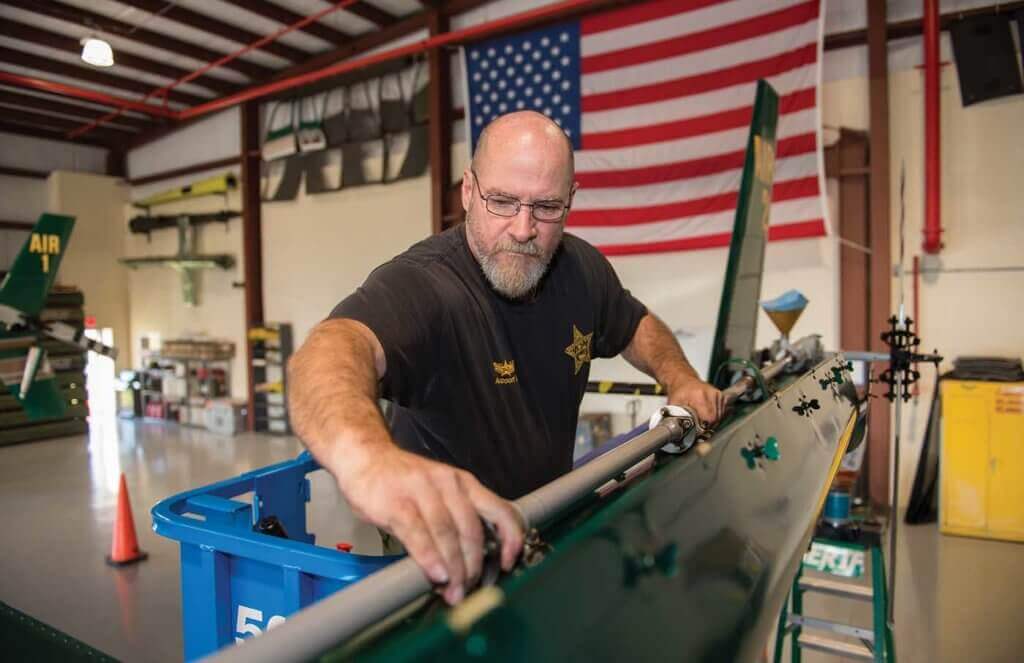
Ellington said, “I think the only reason I got the email was because everybody else in the country was looking for the NSN of the previous ‘dash number’ blades. They were looking for the older -113 blades and these are the latest and greatest -119 blades. I don’t think anyone was looking for that NSN.”
Strict Accountability
The LESO program comes with many accounting and inventory control measures which an agency must follow or risk being banned. Newsom said, “Once a year we have to complete an inventory of all items and parts acquired from the LESO program. They [LESO officials] typically show up and physically do an inventory with us. But you can’t necessarily plan for it. They could come this year and we may not see them again for two years. Or they may show up two years in a row. We never know. They can call right now and tell us they’re coming for a surprise inventory. When they walk in the door, we have to produce.”
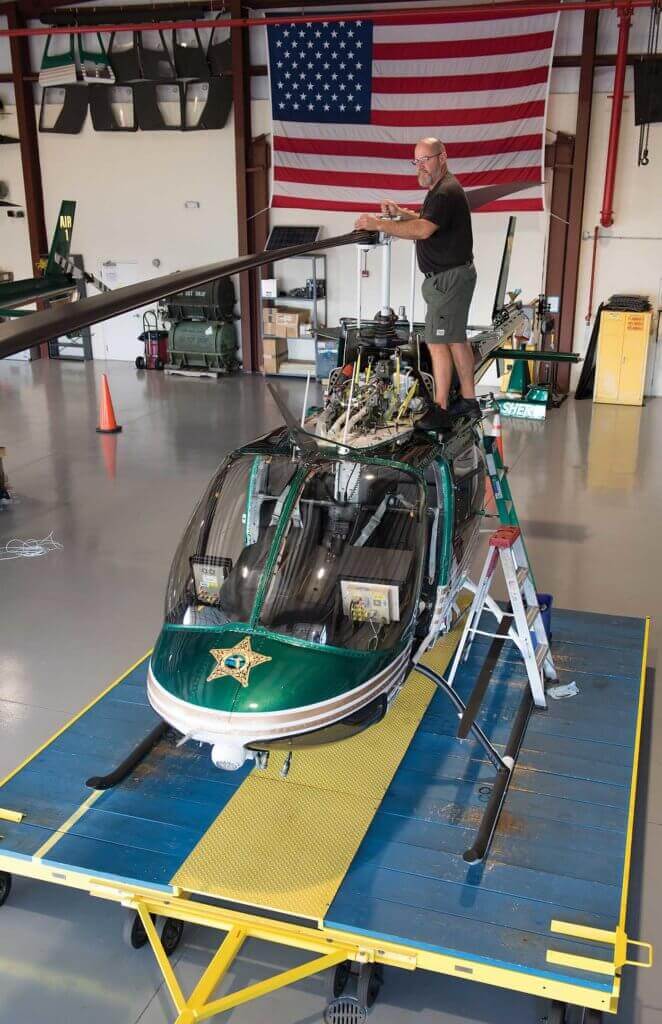
MCSO uses two methods for controlling inventory. One is FEPMIS (Federal Excess Property Management Information System), an inventory and property management program adopted by LESO. The unit also uses a separate internal computer program to keep track of the many parts meticulously organized on the shelves in the parts room. Each item, when consumed, is deducted from inventory and a form generated to LESO as to how it was consumed. A permanent record is also maintained.
“I’d like to think LESO sees us as a role model for this program,” said Newsom. “We’re very, very careful to ensure accountability for those parts. We can tell you, at the drop of a hat, exactly how many of every item we have and on what shelf at any given time.”
The MCSO shared its model for working with LESO with several other local Florida law enforcement agencies operating OH-58s. As a result, eight agencies, including MCSO, have organized a network for sharing parts among themselves, following the strict LESO procedures for the transfer of surplus items.
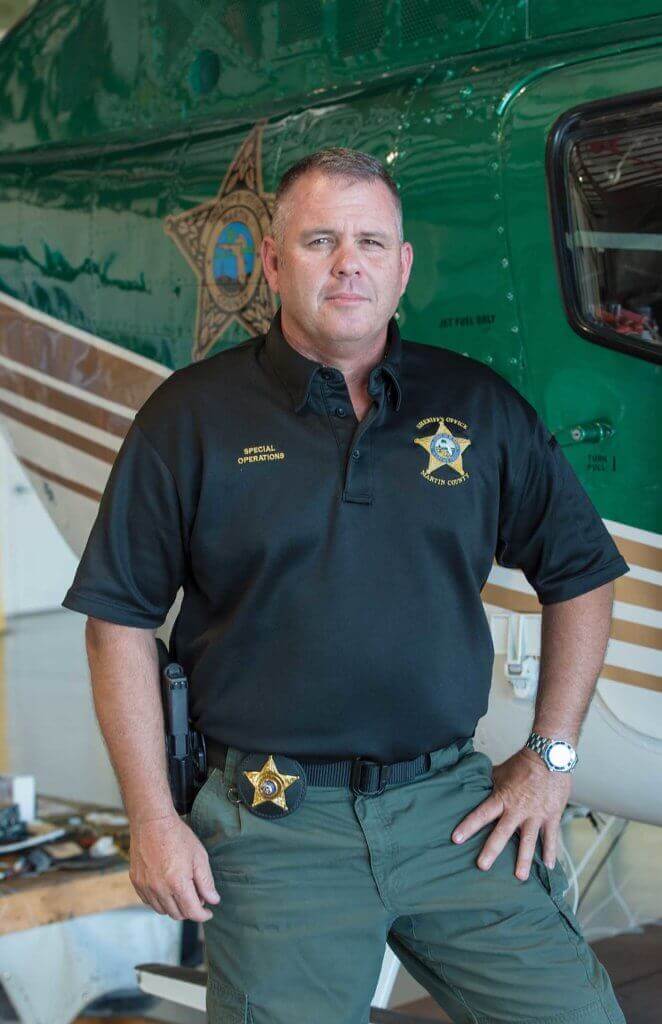
“The LESO program is absolutely critical for us,” said Ed Henderson, acting chief pilot for Collier County Sheriff’s Office, which operates two OH-58s. “Over the years we have acquired parts through the 1033 program and it’s been a huge cost saving measure. If Doug [Newsom] needs a part and I have it to give, he gets it. And then months later, if I need a part, I’ll call him or I’ll call Brevard County or I’ll call Marion County…”
Newsom said, “No one agency or unit can store enough parts for an obsolete aircraft to keep it in service for years to come. But between all of us working together, we can do just that. All I have to do is submit the request to LESO and say, I would like to transfer these items to this or that agency [which must be in good standing with LESO], and they typically give the approval.”
A Promising Future
Today, MCSO’s Aviation Unit operates from a small office and hangar facility at the Witham Field Airport in Stuart. From there the unit houses, maintains, and operates three OH-58A helicopters, and recently added a forfeited Beechcraft 58P Baron. The hangar also houses two recently acquired non-flyable OH-58As to be used for spares.
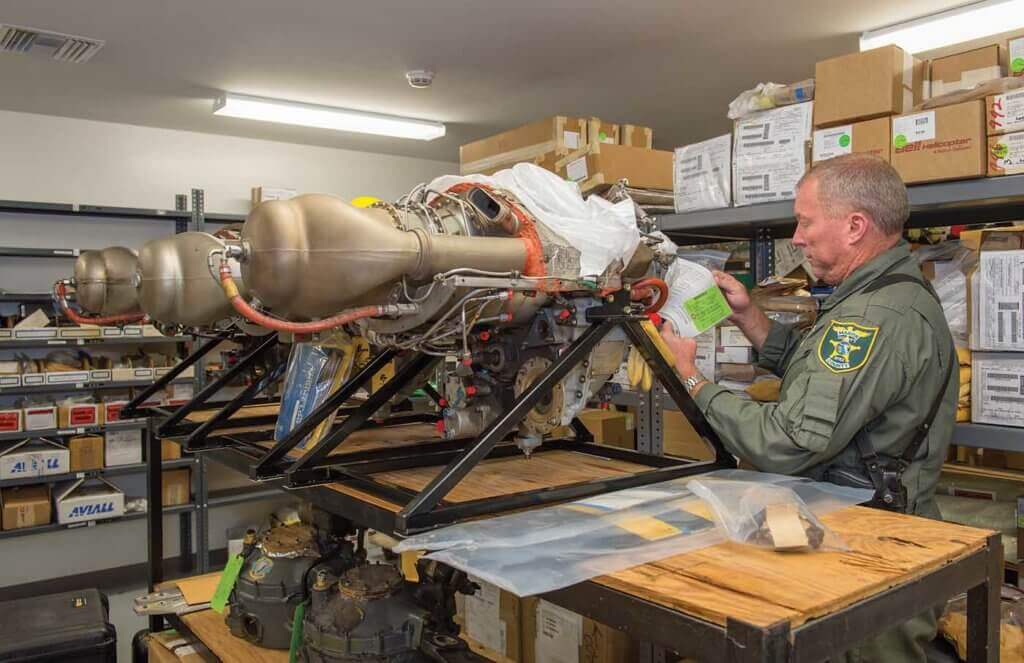
Two pilots and two tactical flight officers (TFOs) make up the full-time staffing. Four field officers and one reserve officer trained as TFOs rotate through on a regular schedule, as does a civilian volunteer pilot. Together, these crews are able to flex their schedules to provide coverage for a day shift and evening shift six days a week until 2 a.m.
The three operational helicopters have night vision goggle (NVG)-compatible cockpits, are configured with Garmin’s GTN 650 coupled with Aspen Avionics’ Evolution 1000, and are ADS-B Out compliant. The police technology package includes an L3 Wescam MX10 electro-optic/infrared (EO/IR) sensor, dual touchscreen cockpit monitors, and computer mapping via Churchill Navigation’s ARS-600 augmented navigation system.

Aircraft maintenance is solely in Ellington’s hands. He follows the Airborne Law Enforcement Association (ALEA)-approved Interagency Committee for Aviation Policy maintenance program and has tailored it to fit the agency’s needs. Helicopter components are maintained to commercial standards to include time between overhaul (TBO) times, and the airplane is maintained to Federal Aviation Agency and manufacturer standards. Heavy maintenance, overhauls, and avionics repair are sent to established vendors.
With Martin County’s proximity to south Florida and the Caribbean, MCSO’s mission profile is diverse. In addition to the routine calls for service, drug smuggling and human trafficking, via highway or by water, are a constant threat. With miles of shoreline and waterways on the eastern edge of the county and vast expanses of undeveloped land to the west, the helicopters provide a critical element for supporting the department’s overall proactive enforcement roles.

In recent months, this optimism has generated conversations among unit members of how they one day may bring online a surplus medium helicopter such as a Bell UH-1 to expand their mission capability for hoisting and firefighting operations.
In just the past two years, utilizing the LESO program along with strict unit management, MCSO has gone from teetering on the brink of extinction to a very promising future. Said Ellington, “Bell was conducting a survey of law enforcement operators of OH-58s and they wanted to know what our life expectancy was for our OH-58s. They told me a lot of agencies are month-to-month because they’re hurting for parts. But with what we now have in our parts inventory, we can easily go 10 years.”





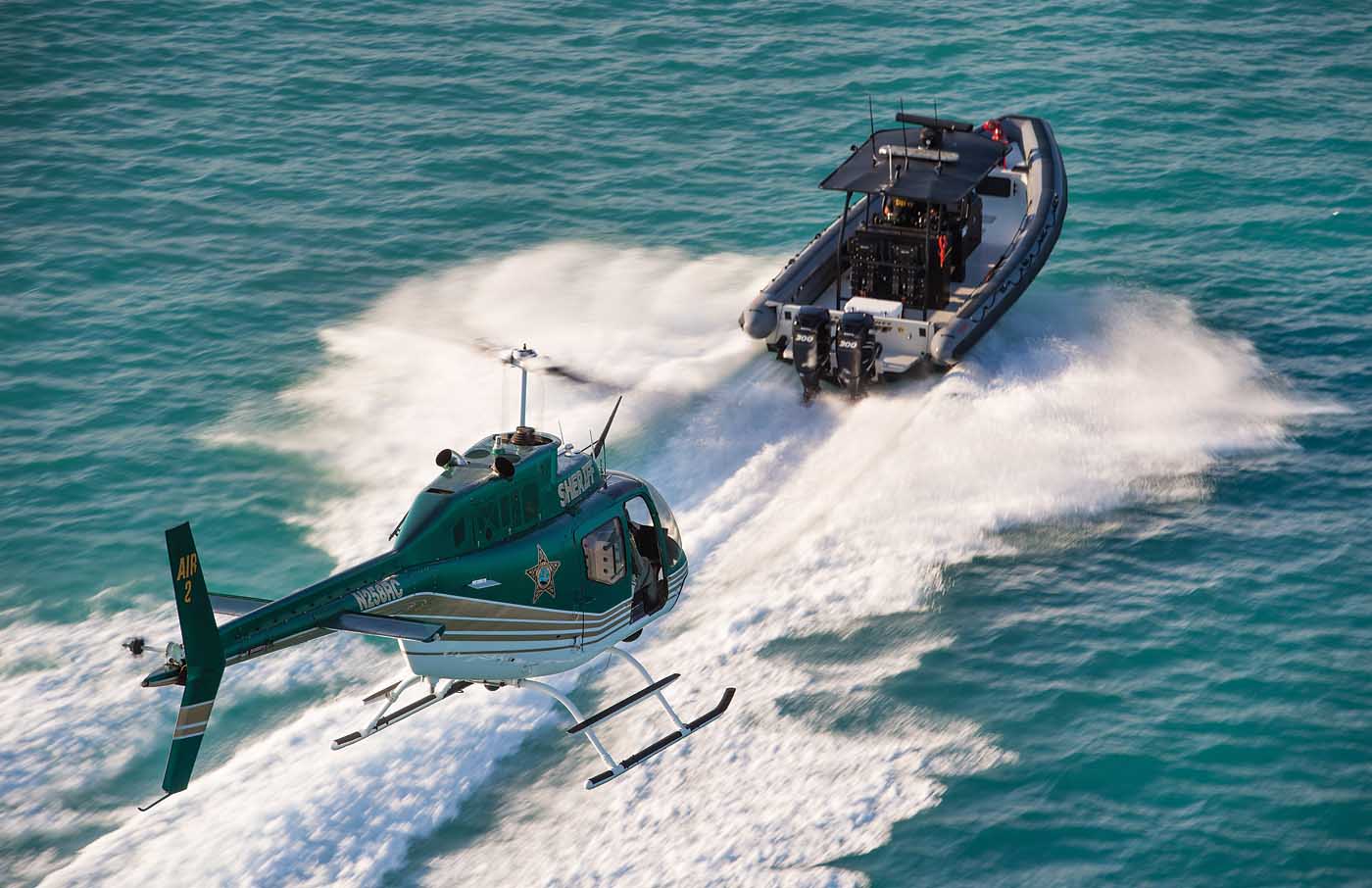
Great article. Seems they are saving money on Pop-out Floats those pictures over the water suggest they are taking a calculated Risk Vs Cost in my mind.
Excellent article on the creative use of surplus government equipment supporting civilian law enforcement and cash strapped agencies.
Several years ago I was tasked with putting together a proposal for grant funding to establish an air support unit for a southwest public safety agency. Trying to enlist the help and support of our congressional delegation proved fruitless. There seemed to be billions for other countries but little for American public safety agencies.